Driving or being a passenger
Roads are very busy at school drop off and pick up times. If you are driving children to or from school make sure that you drive safely to protect children and families walking, riding and scooting to school. Share the road safely and follow the school zone road rules.
-
Restraints/Seat Belts and the Safety Door
Make sure that your child is in the right size child restraint for their height. An adult seatbelt won't generally fit a child properly until they are at least 145cm tall. Children should remain in a booster seat until they can wear a seatbelt safely. For more information about the correct child restraint to use and the laws visit here.

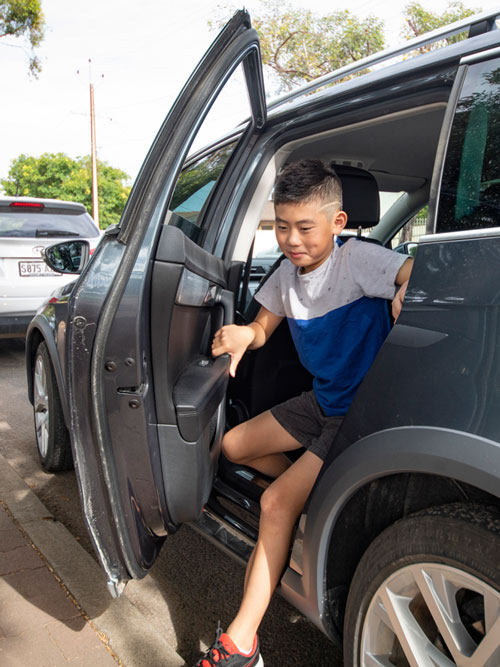
Make sure that you don’t start driving until children are securely buckled in. Remind them to keep their seatbelt buckled until the car is completely stopped. For younger children it is a good idea to unbuckle them yourself.
The safe way to exit a car is from the safe door (kerbside door). Make sure that children don’t step out onto the road.
-
Tips for driving safely with children
School drop off and pick up can be a stressful and hectic time. Plan ahead and chat with children so they understand how important it is to not distract you while driving.
Tips to help get you started:
- Remind children that you will
- be focused on driving to keep them and other people safe. Yelling, fighting and asking for things will distract you as the driver.
- not be handing drinks, food, toys etc. to them while driving - they need to have everything they need before you leave (teaches them good planning skills too). Put a rubbish bag / bin within their easy reach.
Special travel book
Special travel toy
I spy with my little eye
Hypotheticals
20 questions
'Spotto'
Play lists of music
Electronic Devices
 Choose a special travel toy and take it on an adventure to school and back. They can tell the toy all about the route to school and things they see and all about their day on the way home.
Choose a special travel toy and take it on an adventure to school and back. They can tell the toy all about the route to school and things they see and all about their day on the way home. A classic game that will help your child to be more aware of their surroundings. Use traffic associated language, eg stop sign, traffic lights, bike lane. You could also encourage them to look for patterns outside such as square tiles in the footpath or stripes on a wombat crossing.
A classic game that will help your child to be more aware of their surroundings. Use traffic associated language, eg stop sign, traffic lights, bike lane. You could also encourage them to look for patterns outside such as square tiles in the footpath or stripes on a wombat crossing. Ask them hypothetical questions like “if you could have any super power what would it be?” etc.
Ask them hypothetical questions like “if you could have any super power what would it be?” etc. One person thinks of an object (animal, mineral, vegetable), others in the car ask 20 questions (yes or no questions only). After 20 questions other passengers guess what it is.
One person thinks of an object (animal, mineral, vegetable), others in the car ask 20 questions (yes or no questions only). After 20 questions other passengers guess what it is.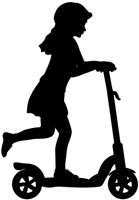 Nominate an item eg. a car of particular colour/brand/number plate etc. children walking, riding or scooting to school, buses of a particular number and the first one to spot the item wins.
Nominate an item eg. a car of particular colour/brand/number plate etc. children walking, riding or scooting to school, buses of a particular number and the first one to spot the item wins. Make up some play lists of music and have a different one for each day / week. You might also like to sing songs together.
Make up some play lists of music and have a different one for each day / week. You might also like to sing songs together.Remember if something really needs your attention while driving, safely pull off the road and stop your vehicle in a safe place before dealing with it.
- Remind children that you will
-
School zones
School zones operate 24 hours a day, 7 days a week throughout the year.
How do they work? School zones have a speed limit of 25 km/h when a child is present - on the road or footpath or median strip (even if they are on a bike.) This applies 24/7. A child is any person less than 18 years of age and includes a student of any age wearing school uniform.
What must drivers do? All drivers, bike riders and motorcyclists must travel at no more than 25 km/h between the school zone signs when a child is present.
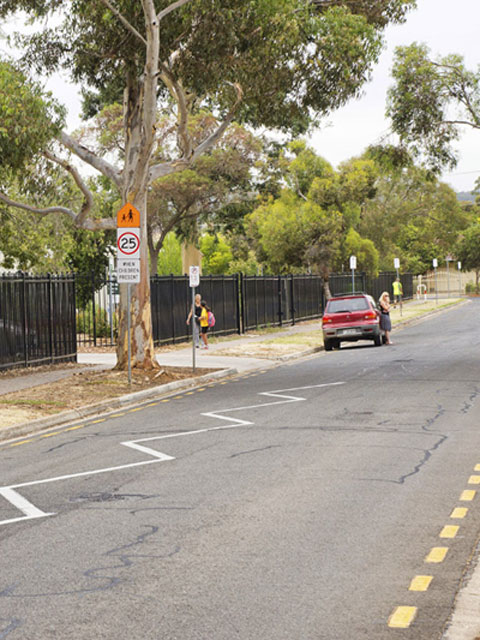

Approaching a school zone End of school zone -
Signs and restrictions around schools
Drivers must not stop at any time in an area marked NO STOPPING or NO STANDING.
Drivers must not stop in a NO PARKING zone unless picking up or dropping off passengers.The driver must stay with their vehicle and be in the zone for no more than 2 minutes.
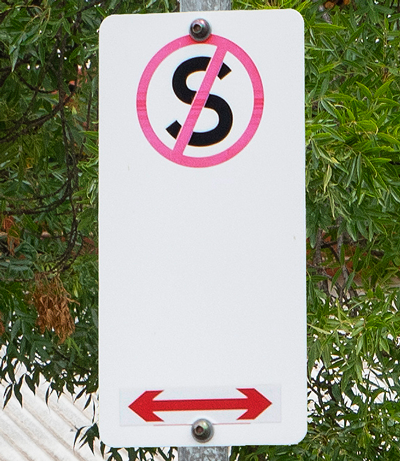

Double parking is illegal. Do not put your and other children at risk by letting children alight from your car between other vehicles.
-
Kiss 'n' Drop, pick up/drop off zones
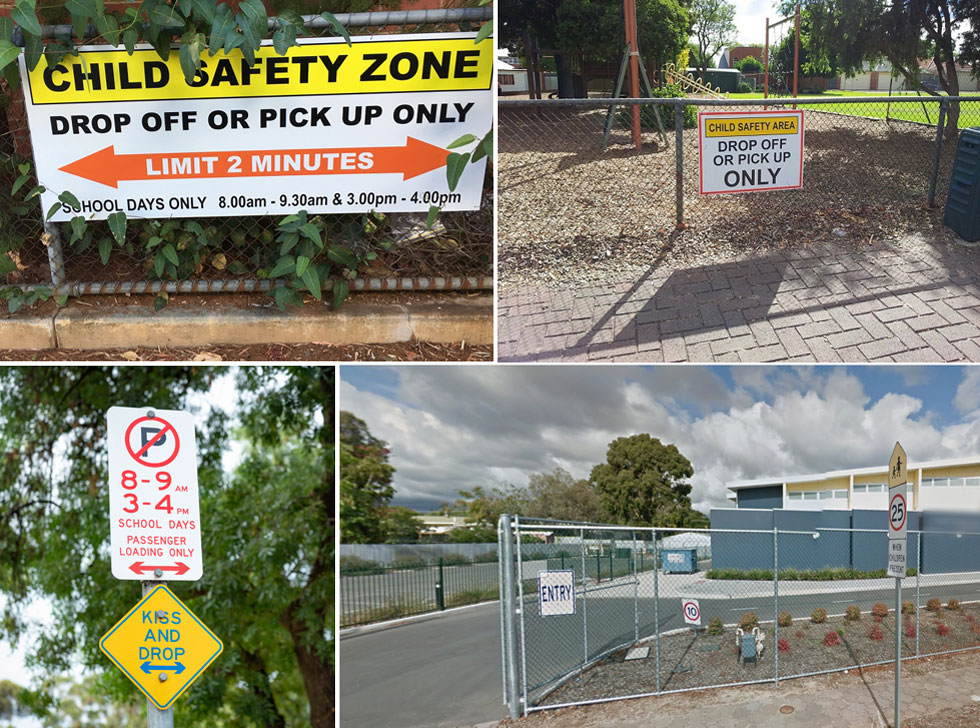
Some schools have drop off and pick up (Kiss ‘n’ Drop) zones. They are located on roads outside the school and/or within school grounds.
- Check your child’s school rules for their specific Kiss ’n’ Drop zones.
- Congestion in these zones increases the risk for children. Do not queue into a roadway or across crossings and driveways. Drive around again rather than cause congestion.
- Children should always get in and out of the car on the safety side (kerbside).
-
Passing a school bus
Drivers, bike riders and motorcyclists travelling in either direction must not exceed 25km/h when passing a school bus that has stopped for the purpose of dropping off or picking up children.
-
Driving near crossings
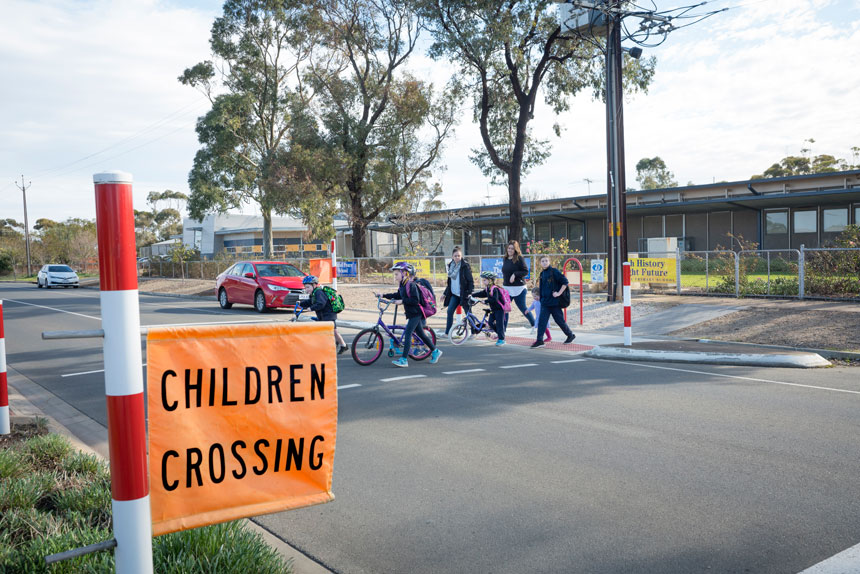
Emu Crossing
These crossings operate when the CHILDREN CROSSING flags are displayed. They are placed within School Zones and a speed limit of 25km/h applies 'when children are present'. Flags are displayed during crossing times e.g. 30 minutes before school starts and after school ends and/or during lunch lunch times. Flags should be taken down at the end of each crossing period.
What should drivers do?
Drivers must travel at no more than 25 km/h at any time when children are present on the road or footpath. Drivers must stop for anyone using the crossing or about to use the crossing when flags are displayed. Obey parking rules within the vicinity of the crossing.
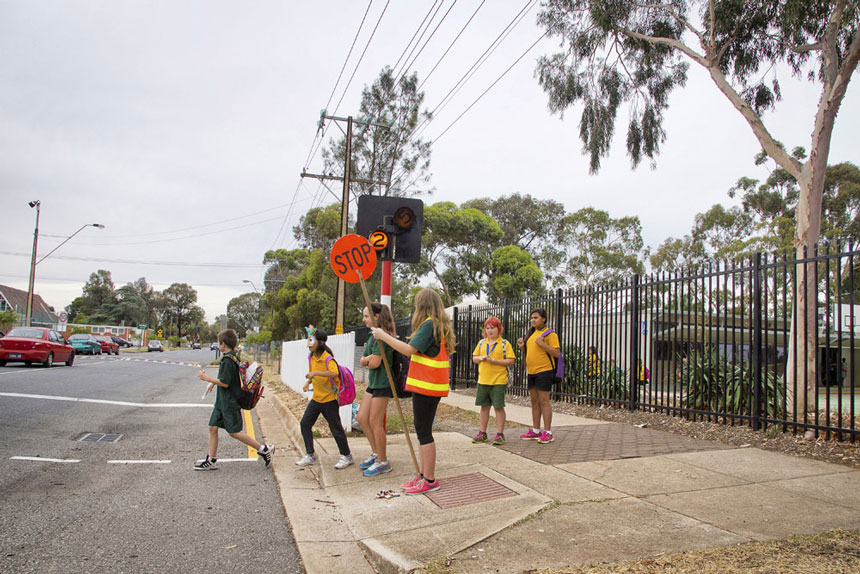
Koala Crossing
These crossings have two yellow alternating flashing lights on red and white posts. A speed limit of 25 km/h applies when the lights are flashing.
What should drivers do?
Drivers must give way to anyone using the crossing or about to use the crossing when the lights are flashing. Obey parking rules within the vicinity of the crossing.
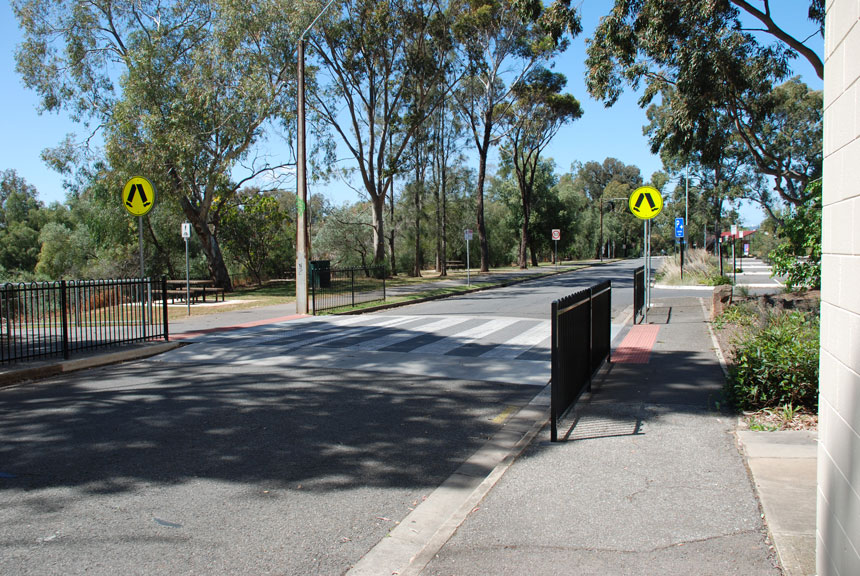
Wombat Crossing
A Wombat Crossing is a raised pedestrian crossing with wide white stripes and usually accompanied by a 40km/h speed limit.
What should drivers do?
Drivers must give way to anyone using or about to use the crossing and follow the signed speed limit. Obey parking rules within the vicinity of the crossing.

Pedestrian Actuated Crossing
Traffic light signal change is initiated by people on the footpath who then cross on the "green" person symbol after checking that all traffic has stopped. They operate 24 hours a day.
What should drivers do?
Drivers must travel at the general speed limit of the road and must stop on the red signal. Obey parking rules within the vicinity of the crossing.
Schools may provide school crossing monitors trained by the South Australia Police to supervise the crossing of children and adults.


 Choose a special school travel book that they leave in the car for the week and change it over each week.
Choose a special school travel book that they leave in the car for the week and change it over each week.